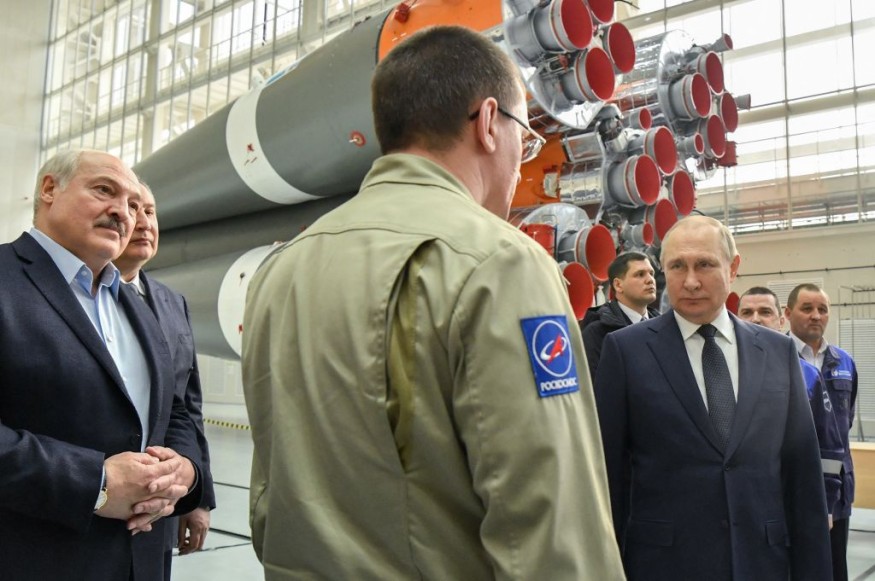President Vladimir Putin stated Tuesday that Russia will restart its lunar program with a new moon landing mission.
Russian President Vladimir Putin made the statement during a visit to the spaceport to commemorate the 61st anniversary of Yuri Gagarin's 1961 expedition, which made him the first human in space.

Russian President Vladimir Putin (R) speaks with a Roscosmos employee, as Belarus President Alexander Lukashenko (L) looks on during their visit at the Vostochny cosmodrome, some 180 km north of Blagoveschensk, Amur region on April 12, 2022.
Russia To Launch Moon Missions On Its Own
Russian President Vladimir Putin discussed plans to fly the Luna-25 spacecraft to the Moon's south pole by the third quarter of 2022 at a press conference on Tuesday.
Putin stated in a Wall Street Journal report that Russia will continue to work on developing a new generation of vehicles and nuclear space-energy technology. Russia had a "clear advantage" for both but did not expand. He also stated that Russia will greatly expand its satellite network.
The mission will launch on a Soyuz rocket from the Vostochny Cosmodrome in Russia's far east, with the goal of testing landing technologies.
Ars Technica added that Putin spoke about Russia's civil spaceflight initiatives to show Russians how he would carry on Gagarin's legacy. "We need to successfully stand up to the challenges of space exploration," he said in a Moscow Times report. Putin stated that Russia is developing a "next-generation cargo ship" and a nuclear-powered space tug to that aim.
The "Orel," or Eagle, spaceship, which would be capable of launching cosmonauts into low Earth orbit and the Moon, is thought to be the next-generation ship.
The trouble is that Orel has been in development for almost two decades under many guises and titles and is still years away from flying-if it ever does. And the nuclear-powered space tug is a notion that is years, if not decades, away from becoming a reality.
Then there's Putin's suggestion of a lunar program. He's referring to Luna 25, Luna 26, and Luna 27, a trio of robotic missions set to launch to the Moon. Like so many others, these missions have been in the works for a long time. Luna 25 was supposed to fly on a Soyuz rocket a decade ago, but its launch date has been until August 2022.
"By the third quarter [of this year], the Luna 25 station must be complete," Putin asked Roscosmos CEO Dmitry Rogozin, as quoted by Russian state news agency TASS.
US-Russian Space Relations
Since an Apollo spacecraft docked with a Soyuz spacecraft in 1975 and NASA astronaut Thomas Stafford and Russian cosmonaut Alexei Leonov shook hands, the US and Russia have worked together in space for over five decades. Following years of cooperation to create the orbiting station, the countries' combined occupancy of the International Space Station commenced in November 2000.
The same Wall Street Journal report mentioned that American astronauts have gone to the International Space Station on Russian rockets several times after the United States decommissioned its space shuttle fleet in 2011. Following the success of Elon Musk's private SpaceX in constructing rockets that can send humans into orbit and dock with the space station, those trips have decreased recently.
Russia's invasion of Ukraine has now put international space cooperation in jeopardy. Roscosmos, Russia's space agency, has thrown doubt on the country's future involvement in the ISS and has halted the delivery of rocket engines to the United States.
RELATED ARTICLE : What Happens To ESA If Ukraine Officially Joins EU? Here's What The Country Could Bring To Space
Check out more news and information on Space in Science Times.











